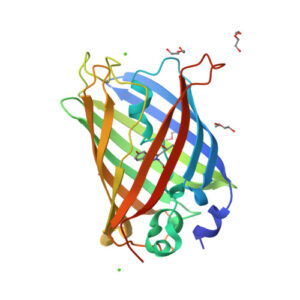DNA Script recently hosted a webinar titled “Unlocking the Unattainable in Gene Construction,” presented by our Team Leader for Applications, Dr. Benoit Derrien. He walked attendees through how our Enzymatic DNA Synthesis (EDS) technology tackles common headaches in gene assembly and building complex DNA. If you couldn’t make it, here’s a recap of what was covered.
The Ongoing Bottleneck: Actually Writing DNA
Benoit began by highlighting a common challenge: while DNA reading is highly efficient, DNA writing (synthesis) often presents a bottleneck. Traditional phosphoramidite chemistry, used since the 1980s, has limitations, including restrictions on DNA length and the use of harsh chemicals that can damage DNA and generate significant waste. These issues can make it difficult for researchers to obtain complex DNA sequences, sometimes leading to suppliers declining orders.
Our Different Approach: Enzymatic DNA Synthesis (EDS)
DNA Script’s goal was to create a cleaner, simpler DNA production method: Enzymatic DNA Synthesis (EDS). This technology relies on three key proprietary components:
- A highly engineered Terminal deoxynucleotidyl Transferase (TdT) polymerase
- Modified nucleotides with reversibly blocked 3′-OH groups for precise control
- A custom solid support compatible with water-based synthesis
How does EDS work? EDS works through rapid cycles (around 10-11 minutes each) of elongation and deprotection. This allows us to synthesize an 80 nt oligo in about 17 hours and our longest 500 nt oligos in up to 72 hours.
Putting Genes Together: PCA & Gibson Assembly
Gene construction is a multi-step process, often starting with assembling smaller oligonucleotides into larger fragments and then stitching these fragments into a full gene. Common methods include Polymerase Cycling Assembly (PCA) and Gibson assembly.
Polymerase Cycling Assembly (PCA)
PCA is a powerful, template-independent method for assembling synthetic genes from short, overlapping oligos using PCR. We’ve demonstrated its effectiveness in assembling genes like EGFP and mRFP. We even assembled a 1.7 kb hemagglutinin (HA) gene by first creating ~500 bp blocks with PCA, using both 60-mer and 120-mer oligos, and found that error correction significantly improved results.
Want to learn more about PCA? For a deep dive into how PCA works and a detailed protocol, check out our dedicated blog post: Gene Synthesis using Enzymatically Synthesized Oligos and Polymerase Cycling Assembly.
Improved Gibson Assembly with Long EDS Oligos
While PCA is effective, Benoit highlighted how long EDS oligos (200-500 nt) are particularly advantageous when used directly with Gibson assembly, especially for those notoriously difficult sequences.
Example 1. Using Long ssDNA Directly: We’ve tested using our long ssDNA oligos (200-500 nt) directly in Gibson assembly.
Oligos up to 300 nt integrate well, typically requiring fewer than 5 clones to find a perfect sequence.
For oligos longer than 300 nt, integration efficiency can decrease. However, adding a 5′ adapter (a short, annealed DNA piece) dramatically improves integration. With a 400 nt oligo and an adapter, you can expect to find a perfect clone by checking ~4-7 clones. Even 500 nt oligos achieved ~20% perfect clones with an adapter.
Example 2. Assembling Multiple Long Oligos: Another powerful strategy involves annealing multiple long EDS oligos (we tested averages from 250 nt to 450 nt) to create double-stranded DNA fragments and then using Gibson assembly.
Assembling a 726 nt sequence with 250 nt oligos yielded ~29% perfect clones (check ~7 clones). Using 450 nt oligos gave ~23% perfect clones (check ~10 clones).
Tackling “Nightmare” Sequences
Sequences full of repeats or high GC content that often fail with standard methods or don’t respond well to error correction? This is where long EDS oligos truly shine. Benoit presented several examples:
High GC & Repeats: We successfully assembled a 299 bp oligo (78.9% GC) with a GGGGGGGG repeat (making up 25.8% of the sequence!). Using a 5′ adapter and without error correction, we only needed to check about 4 clones for a perfect sequence.
Other Repeats/G-Stretches: A 420 bp fragment with tandem repeats and G-stretches achieved ~20% perfect clones using an adapter.
Poly(A) Tails: We can routinely synthesize long Poly(A) tails (often >300 nt), which are very challenging with traditional chemistry, for customers working on mRNA constructs.
So, What’s Our Bottom Line for Your Gene Construction?
Benoit wrapped up with a few main takeaways for anyone working on gene synthesis, based on our findings:
- Putting together genes and gene fragments with our EDS-made oligos, using standard methods like PCA and Gibson assembly, can be done pretty efficiently – he showed an example within 3 days.
- Using our longer EDS oligos (like 120 nt) gives you assembled genes of similar quality to what you get with shorter oligos (like 60 nt). This is great because it gives you more freedom in your design and lets you build bigger blocks.
- If you’re using PCR-based assembly, incorporating an error correction step really does improve your results.
- And for those really tough sequences–the ones that are hard to make or cause problems with error correction–our long EDS oligos (from 200 to 500 nt) are a solid, direct option. You can assemble them using Gibson assembly, sometimes with a 5′ adapter for the longer ones, and you often don’t need to do error correction on the oligo itself.
How We Offer These Tools at DNA Script
He concluded by explaining how you can get access to our EDS technology:
- Our ssDNA Oligo Service: You can order custom ssDNA oligos up to 500 nt directly from us. This includes those tricky sequences like long poly(A) tails, ITRs, and GC-rich regions.
- Our SYNTAX Platform: This is our benchtop system that lets your lab print its own custom DNA oligos right when you need them. This offers speed, control over your DNA supply, and helps keep your intellectual property in-house.
If you’d like more information about any of our products and services, please get in touch!
Discover our EDS ssDNA


